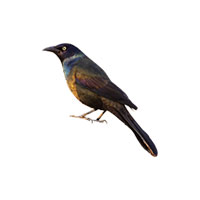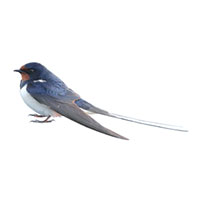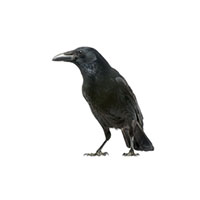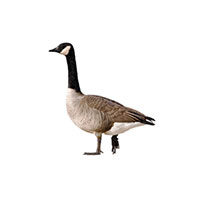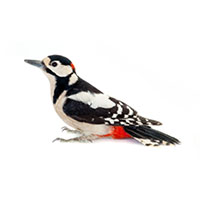Grackles in Wisconsin
Feeds on insects, including beetle grubs, grasshoppers, caterpillars, spiders, millipedes, earthworms, and diverse items such as crayfish, minnows, frogs, lizards, eggs and young of other birds, and small rodents. Vegetable matter is also important in their diet. During the winter months their diet focus on berries, seeds, waste grain, and acorns.
Grackle Habitat and Nesting
Grackles are common in many kinds of open or semi-open countries, including farmland, towns, groves, and waterways. They often forage for food in farm fields, pastures, suburban lawns, cattle feedlots, and marshes. Nests are well hidden among branches of dense trees (especially conifers) or shrubs near water or close to open areas, as in groves, woodland edges, and parks. Built by the female, nests are bulky and made of weeds, grass, and twigs, usually with some mud added. The inside is lined with fine grass. The birds typically nest in small colonies of 10-30 pairs, but sometimes 100 or more.
Grackle Mating & Life Cycle
In early spring, courtship begins when the male fluffs out body feathers, partly spread wings and tail, and gives short scraping songs.
Eggs
Generally, four to five light blue, spotted eggs are laid. Incubation is done by the female for 12-14 days. While the male may remain with the female during this period, most do not.
Young
Both parents feed nestlings, bringing them mostly insects. Young leave the nest about 16-20 days after hatching. One or two broods per year are common.
Grackle Damage
As they are scavenging birds, large numbers can be found near garbage cans, food courts, and other areas where food is present. They are often found in areas associated with humans creating unsanitary conditions with their fecal matter. They are also agricultural pests because of their tendency to eat small seedlings and damage crops.
Grackle Prevention
The best way to get rid of grackles is to be proactive and discourage them from building nests in the first place. It’s important to thoroughly clean up any bird droppings or nesting materials before any deterrent products are installed (grackles are attracted to the scent of their droppings and nests).
Grackle Control
Grackles are covered under the Federal Migratory Bird Act, which states that most birds and their parts – feathers, eggs, nests, etc.- are protected by federal law from being killed, taken, transports, possessed, bought, sold, imported, or exported without a valid federal permit.
Below are humane options for deterring grackles from landing or nesting on your property:
- Use netting to block them from rafters or beams.
- Remove any food source, including feeders.
- Remove leftover food on the floor and tables of open-air eateries.
- Tightly close all trash containers.
- Discourage the feeding of grackles by humans.
- Grackles are quick and alert to any perceived threats, so scare tactics, such as sound deterrents or visual distractions, can be highly effective.
Bird services are limited to commercial clients.
Need help with Grackles?
We'll call you! Leave your information below.
Pests Belong Outside!
Leave your information below and we will give you a call back.
"*" indicates required fields
*During normal business hours. After hours inquiries will be returned the next business day.

